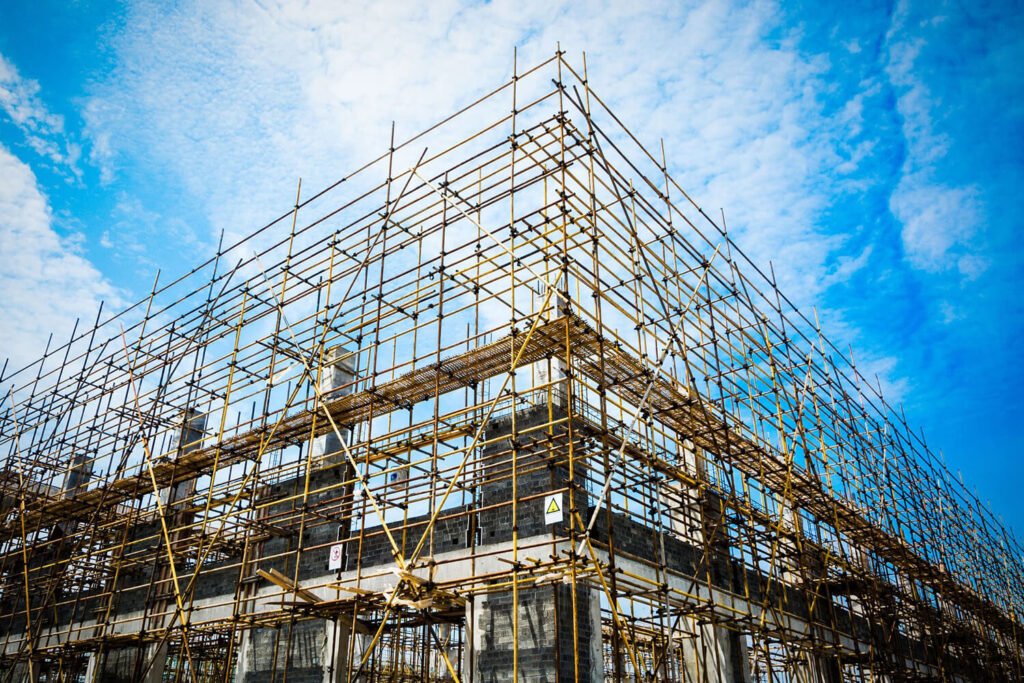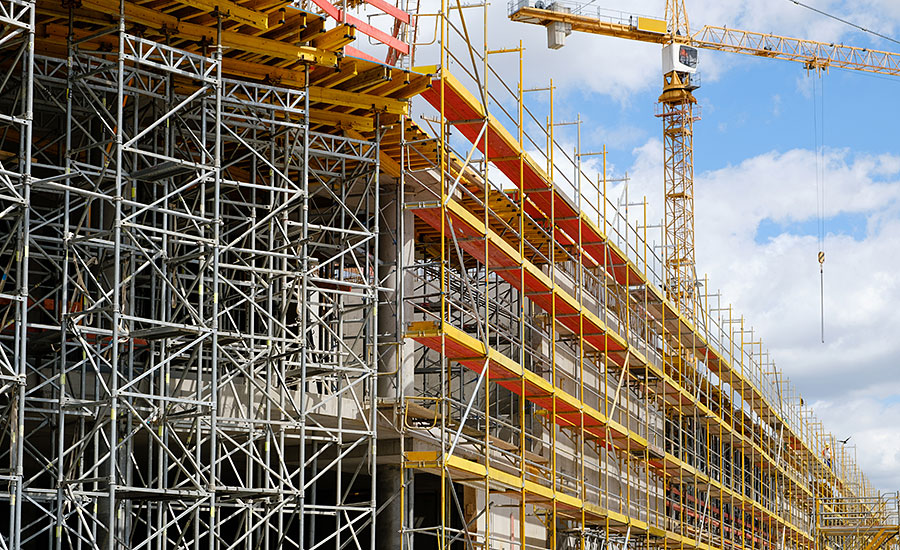The Conveniences of Scaffolding for Safety And Security and Performance in Structure Projects
Scaffolding is a necessary component in the world of construction, substantially contributing to both safety and functional performance. The impact of scaffolding expands beyond standard safety and security procedures; its critical application can transform project timelines and outcomes (Scaffolding).
Enhanced Employee Safety

Enhanced worker safety and security is a paramount concern in the building market, where the dangers related to falls and mishaps can have alarming effects. Effective scaffolding systems play a crucial function in alleviating these risks by providing stable systems for workers at raised heights. By ensuring that scaffolding is appropriately erected and maintained, construction business can dramatically minimize the chance of falls, which are amongst the leading root causes of office injuries and deaths.
Furthermore, scaffolding improves safety via its layout features. Guardrails, toe boards, and non-slip surface areas contribute to a protected workplace, lessening the danger of mishaps. Furthermore, scaffolding allows workers to access hard-to-reach areas without the demand for makeshift remedies, which can jeopardize safety and security requirements.
Training workers on the correct use scaffolding is similarly important. Ensuring that employees are experienced about tons abilities, assembly procedures, and safety and security procedures additionally enhances the effectiveness of scaffolding in stopping crashes. Finally, integrating durable scaffolding systems within construction projects not only boosts employee security but likewise promotes a society of safety that profits the whole workforce while improving overall productivity.
Improved Access and Flexibility

In addition, scaffolding permits the hassle-free transport of materials and devices, minimizing downtime associated with relocating devices. Employees can effectively access different areas of a job, which is particularly vital in complicated builds where vertical and straight movement is frequent - Scaffolding. This availability not just simplifies operations however likewise makes it possible for groups to react promptly to changing project needs
In addition, scaffolding can be customized to fit specific website conditions, improving movement in tight or irregular rooms. This adaptability ensures that building and construction activities can proceed efficiently, despite the difficulties presented by the environment. By cultivating enhanced accessibility and movement, scaffolding plays a vital role in sustaining building and construction crews and optimizing the total efficiency of structure tasks.
Boosted Project Performance
In construction, task performance is considerably affected by the effective use scaffolding systems. By giving a stable and safe and secure platform for workers, scaffolding lessens downtime and accelerates the speed of building and construction tasks. With better access to raised work locations, teams can complete tasks faster, minimizing the general job timeline.
The modular nature of modern-day scaffolding enables for quick setting up and disassembly, allowing quick changes between various stages of a task. This flexibility not only improves process yet additionally adds to far better coordination among numerous professions, as several teams can work at the same time on different sections of a framework.
In addition, scaffolding makes sure that employees are positioned correctly to execute their tasks without unneeded pressure or danger of injury, thus reducing the probability of crashes that can bring about pricey delays. Enhanced precaution embedded in scaffolding systems, such as guardrails and toe boards, more support efficient procedures by maintaining employee emphasis on the job at hand instead of safety problems.

Versatility for Various Projects
Scaffolding systems stand out for their adaptability across a large range of construction jobs, efficient in conference specific website demands and jobs. Their modular design permits fast adjustments to suit various structure kinds, from domestic to industrial frameworks, making sure that workers have risk-free access at different heights and angles.
These systems can be customized for varied applications, such as façade work, interior renovations, or durable commercial projects. For example, lightweight aluminum scaffolds are ideal for indoor work, while robust steel structures offer the essential assistance for massive construction. The versatility of scaffolding includes its ability to be set up for both permanent and short-lived frameworks, allowing professionals to successfully prepare and execute their jobs.
Additionally, scaffolding can be employed in tough environments, consisting of urban setups where room is limited or on uneven surface where typical accessibility options are impractical. This flexibility minimizes the demand for several gain access to solutions, reducing prices and project timelines. By fitting a range of problems and tasks, scaffolding improves the overall efficiency look at this web-site and performance of building and construction initiatives, verifying to be an essential property in the building market.
Compliance With Safety Criteria
Exactly how can building projects make sure the safety of employees while keeping performance? Regulative structures, such as OSHA in the United States, provide standards that regulate the usage of scaffolding, ensuring that it meets strict security criteria.
Proper scaffolding layout and installation play a crucial duty in conformity. Educating employees on risk-free scaffold usage and the relevance of conformity with safety requirements scaffold background color further enhances a society of security on-site.
Furthermore, paperwork and record-keeping associated to safety and security assessments and employee training are vital. These practices not only show compliance however additionally offer responsibility and openness. Ultimately, by prioritizing adherence to safety and security requirements, building and construction projects can promote a more secure workplace, consequently increasing productivity and performance without compromising worker security.
Conclusion
In verdict, scaffolding offers as an important component in structure jobs, dramatically improving safety and security and effectiveness. Adherence to safety and security requirements emphasizes the value of scaffolding in attaining successful task end results, making it important in the building and construction industry.
Scaffolding is an important component in the world of construction, substantially adding to both security and operational efficiency. The effect of scaffolding extends past basic safety and security measures; its critical implementation can change job timelines and end results. In more helpful hints conclusion, integrating robust scaffolding systems within construction tasks not only improves worker safety but likewise promotes a society of safety and security that profits the whole labor force while enhancing total productivity.
In conclusion, scaffolding serves as a vital part in building projects, dramatically boosting safety and security and performance. Adherence to safety and security requirements emphasizes the significance of scaffolding in accomplishing successful task results, making it essential in the construction sector.